Awhile back, someone left me a comment on one of my videos that made me bristle. In my video, I was explaining some of the ideas and processes that went into some of my paintings. The gist of the comment was that the person would rather not hear me talk about my work, and that instead of talking I should have just shown a slide show set to music so they wouldn’t have to be subjected to my annoying yakking while they were trying to enjoy the pretty pictures. After all, art should speak for itself.

Eclipse At Sea. 16″ x 16″, Oil on Wood, © 2013 Cedar Lee
My response was to suggest that if they weren’t interested in hearing my thoughts, they weren’t the intended viewer for that video, as the video was made specifically for people interested in hearing my thoughts. And that they could always mute the video then play their own music track while they watch, or perhaps just go view my paintings on my website where they can enjoy the art with no sound at all.
I’ve heard artists say, “Art speaks for itself,” as well as ”After I’ve made the art, my job is done. It’s not my concern what happens after I put it out into the world.” I agree with this sentiment to an extent, as all artists must at some point relinquish control and make peace with whichever way their work happens to be received.
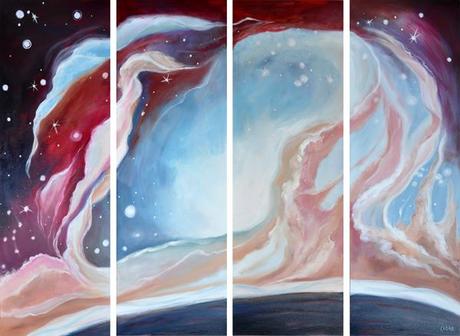
Spirit. 36″ x 48″ (4 panels), Oil on Canvas, © 2013 Cedar Lee
However, I think that an artist refusing to talk about their work is a cop-out, a sort of laziness. Of course it’s always easier to paint whatever you want, not put much thought into why you’re painting it or what it means, and put it out there for viewers to process as they will. But I think when you do things that way the art is not as purposeful, and when a viewer is genuinely interested in learning more about the artist’s thoughts, the artist won’t have the necessary practice to be able to articulate answers to questions.
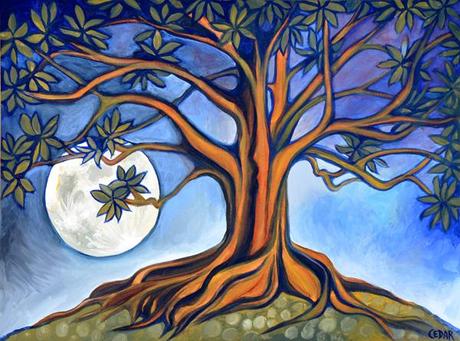
Milk Moon Rising. 18″ x 24″, Oil on Canvas. © Cedar Lee 2013
One trend often made fun of in the art world–and I witnessed a lot of this especially as a young student artist–is when the artist feels compelled–or in the case of an art class, actually is required in order to fulfill an assignment–to answer questions about the meaning behind their art before they’ve clearly answered those questions their own mind.
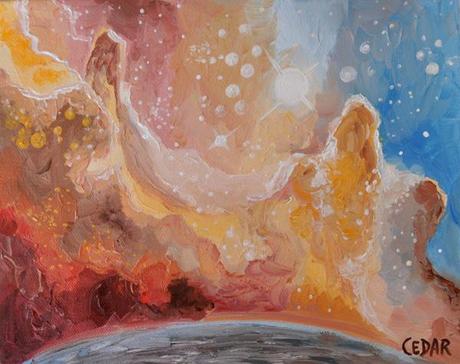
Glow. 8″ x 10″, Oil on Canvas, © 2013 Cedar Lee
The result: the notorious “BS” artist’s statement, stereotypically including the phrase “____ symbolizes man’s struggle against ____.” This sort of speech has also been used by insecure art viewers in an attempt to sound smart, grasping for whatever sounds “deep,” with the hope that whomever they’re trying to impress knows less about the art in question than they do. It’s funny! But it highlights how challenging it can be to think conceptually, visually, and verbally all at once.
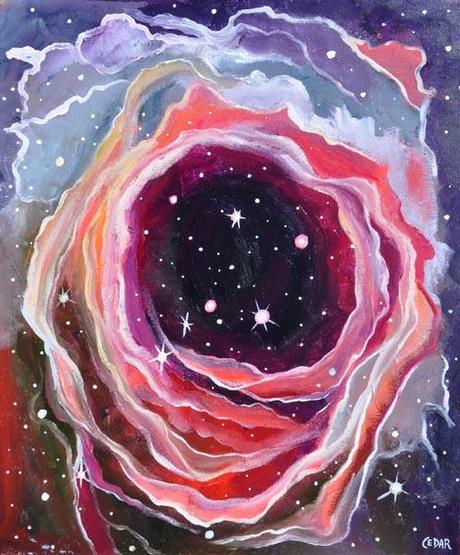
Portal. 24″ x 20, Oil on Canvas, © 2013 Cedar Lee
However, the long and bumbling process of defining what’s important to you in your work and learning how to communicate it in words is a worthwhile one. It becomes easier with practice.
When you don’t make the effort to put your thoughts into words, you’re choosing to experience the process of your own work less deeply. An idea that never gets defined clearly has no chance to evolve into something bigger. Talking about your art can be difficult because for one thing, so much about painting is purely visual and simply hard to put words to, and for another, it forces you to really think about what you’re saying and why–to clearly define and examine your thought process behind the work.

Threshold. 18″ x 24″, Oil on Canvas, © 2013 Cedar Lee
It also takes bravery to talk about your work, because there’s always the niggling voice in the back of your mind telling you that other people will think you’re stupid, that your ideas are boring, that you aren’t good or interesting. Or even worse, you’ll discover that the intention behind your work didn’t translate at all, that you are so ineffective at visual communication that nobody got the message. Putting your thoughts into words makes you vulnerable to criticism.
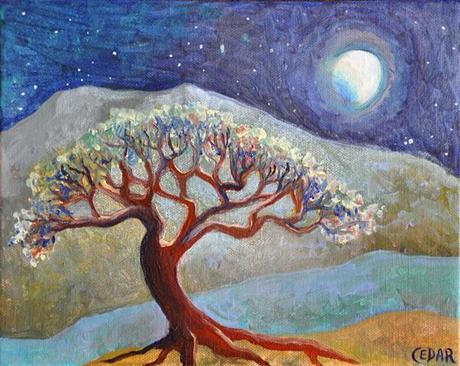
Lone Tree at Moonrise. 8″ x 10″, Oil on Canvas, © Cedar Lee 2013
What people may not understand is that when an artist is attempting to put words to the ideas behind the art, the listener is actually being included in the art-making process and witnessing a moment out of that artist’s evolution of his/her process. This is not for everyone, obviously. Only a select group out of your total audience is going to have any interest in hearing your thoughts about your work, and that’s okay. Not everyone needs that. Some prefer to just enjoy the art and inject their own meaning into it.

Stardust. 30″ x 30″, Oil on Canvas, © 2013 Cedar Lee
But, under the right circumstances, being able to talk about your art allows others to connect with it in ways they wouldn’t otherwise. And connecting to others is, in my opinion, one of the greatest pleasures of making art.
What do you think? Do you like to hear artists’ thoughts about their own work, or do you prefer your experience of the art not to be influenced by that?
